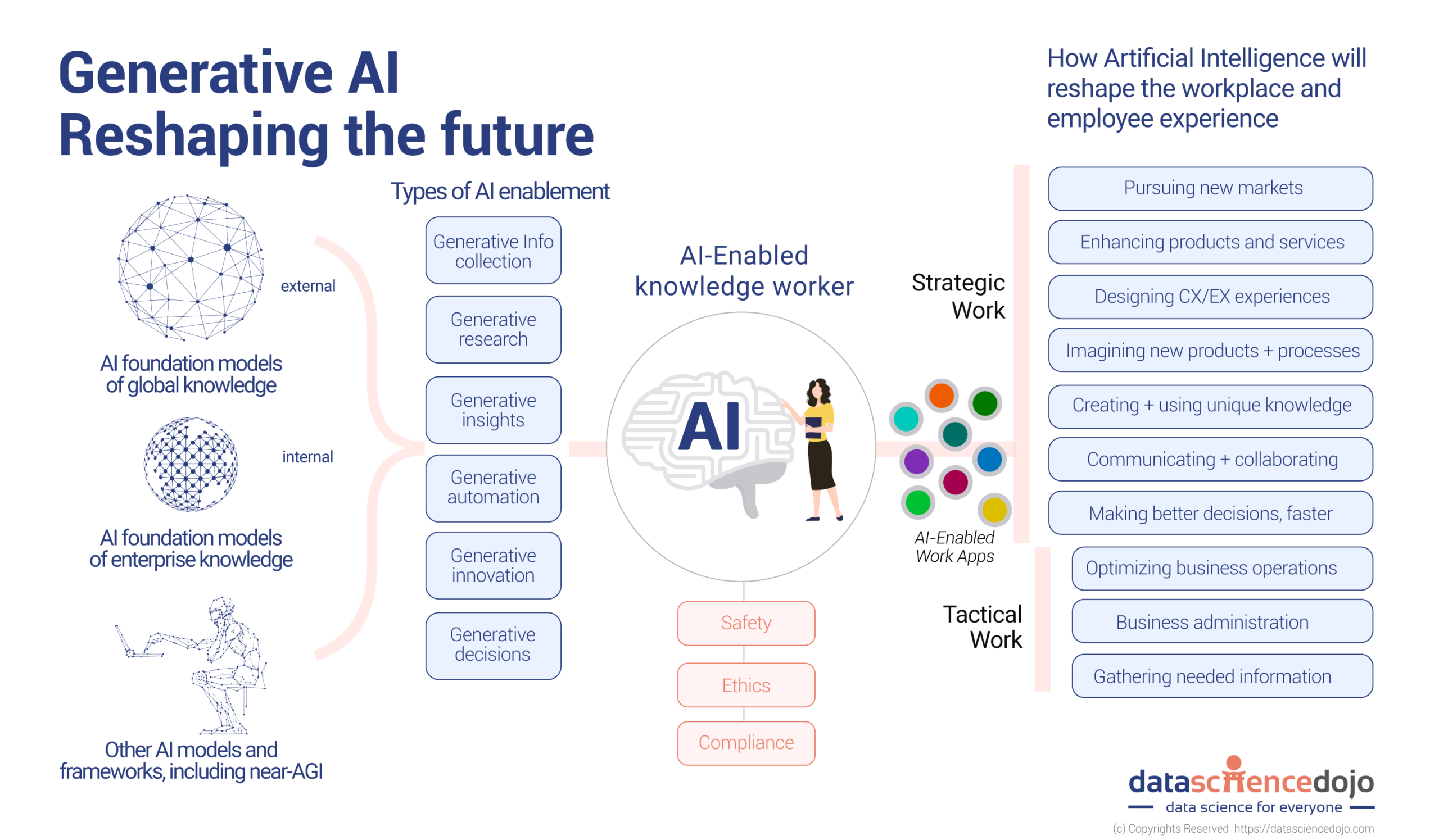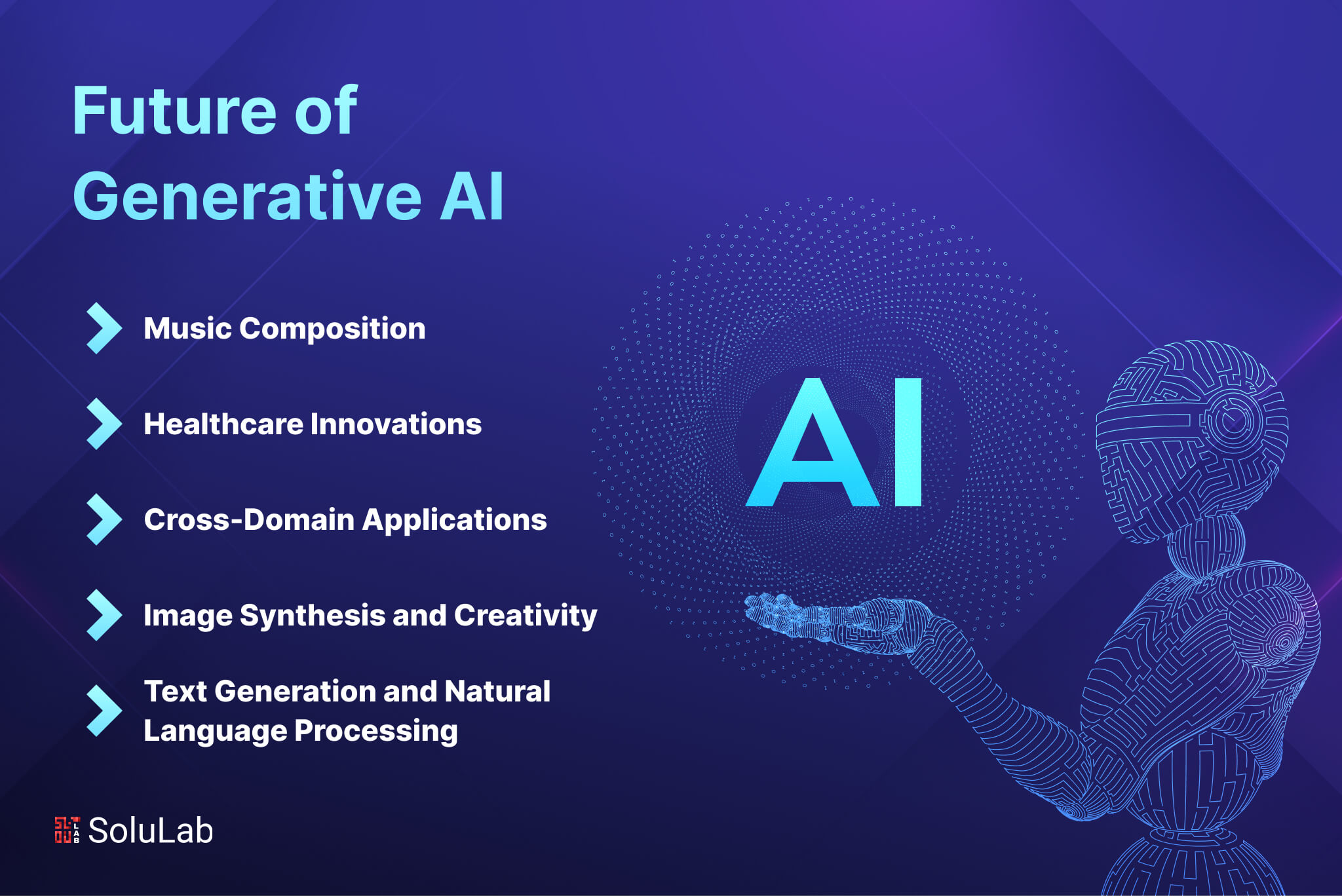
The Unfolding Future of Generative AI: Creativity, Automation, and Transformation
Generative AI, the branch of artificial intelligence focused on creating new content – text, images, audio, video, code, and more – has rapidly evolved from a promising concept to a transformative force across industries. From generating realistic images to composing music and even designing new drugs, generative AI models are reshaping how we approach creativity, problem-solving, and automation. As the technology matures, its future promises to be even more profound, bringing both unprecedented opportunities and significant challenges.
Current Landscape and Key Advancements
Before delving into the future, it’s essential to understand the current state of generative AI. The field is dominated by several key techniques:
- Generative Adversarial Networks (GANs): GANs consist of two neural networks, a generator and a discriminator, that compete against each other. The generator creates new data samples, while the discriminator tries to distinguish between real and generated data. This adversarial process leads to the generation of increasingly realistic and high-quality content.
- Variational Autoencoders (VAEs): VAEs learn a compressed representation of the input data and then generate new data points from this latent space. VAEs are particularly useful for generating diverse and novel outputs.
- Transformers: Originally developed for natural language processing, transformers have become a cornerstone of generative AI. Their ability to process sequential data and capture long-range dependencies has enabled breakthroughs in text generation, image synthesis, and more. Models like GPT-3, DALL-E, and Stable Diffusion are prime examples of the power of transformers.
- Diffusion Models: These models work by gradually adding noise to data until it becomes pure noise, and then learning to reverse this process to generate new data from noise. Diffusion models have achieved state-of-the-art results in image generation, surpassing GANs in many applications.
These techniques have fueled the development of a wide range of applications:
- Content Creation: Generating realistic images, writing articles, composing music, and creating video content.
- Drug Discovery: Designing new drug candidates and predicting their properties.
- Product Design: Generating novel product designs and optimizing existing designs.
- Software Development: Generating code, testing software, and automating software development tasks.
- Data Augmentation: Creating synthetic data to improve the performance of machine learning models.
Future Trends and Potential Developments
Looking ahead, the future of generative AI is likely to be shaped by several key trends:
-
Enhanced Realism and Fidelity: Generative models will continue to improve in their ability to create realistic and high-fidelity content. This will be driven by advances in model architectures, training techniques, and the availability of larger datasets. Expect to see even more photorealistic images, convincing videos, and human-like text generated by AI.
-
Increased Control and Customization: Users will have more control over the generation process, allowing them to specify desired attributes, styles, and constraints. This will involve developing more intuitive interfaces and incorporating user feedback into the training process. Imagine being able to precisely control the style, composition, and content of an image generated by AI, or to guide the writing style and tone of a text generator.
-
Multimodal Generation: Generative AI will increasingly be able to generate content across multiple modalities, such as text, images, audio, and video. This will enable the creation of more complex and engaging experiences. For example, an AI model could generate a video from a text description, or create music to accompany a generated image.
-
Personalization and Adaptation: Generative models will become more personalized and adaptive to individual users. This will involve training models on user-specific data and preferences, allowing them to generate content that is tailored to their needs and interests. Imagine an AI that generates news articles that are specifically tailored to your interests, or creates personalized learning materials based on your learning style.
-
Integration with Other AI Technologies: Generative AI will be increasingly integrated with other AI technologies, such as computer vision, natural language processing, and reinforcement learning. This will enable the development of more sophisticated and intelligent systems. For example, an AI system could use computer vision to analyze an image and then use generative AI to create a text description of the image.
-
Democratization and Accessibility: Generative AI tools will become more accessible to a wider range of users, thanks to the development of user-friendly interfaces, cloud-based services, and open-source models. This will empower individuals and small businesses to leverage the power of generative AI without requiring specialized expertise.
-
Edge Computing and On-Device Generation: As devices become more powerful, generative AI models will be able to run on edge devices, such as smartphones and tablets. This will enable real-time generation of content without requiring a connection to the cloud, improving privacy and reducing latency.
-
AI-Driven Discovery and Innovation: Generative AI will play a crucial role in scientific discovery and technological innovation. By generating novel hypotheses, designing new materials, and optimizing complex systems, AI can accelerate the pace of research and development across various fields.
Impact Across Industries
The future of generative AI will have a profound impact on various industries:
- Media and Entertainment: Revolutionizing content creation, enabling the generation of personalized entertainment experiences, and creating new forms of art and expression.
- Healthcare: Accelerating drug discovery, personalizing treatment plans, and generating realistic medical simulations for training purposes.
- Manufacturing: Optimizing product designs, generating virtual prototypes, and automating manufacturing processes.
- Education: Creating personalized learning materials, generating interactive simulations, and providing personalized feedback to students.
- Finance: Detecting fraud, automating customer service, and generating personalized financial advice.
- Retail: Generating personalized product recommendations, creating virtual shopping experiences, and optimizing supply chain management.
Challenges and Ethical Considerations
While the future of generative AI is promising, it also presents several challenges and ethical considerations:
- Bias and Fairness: Generative models can perpetuate and amplify biases present in the training data, leading to unfair or discriminatory outcomes. Addressing this requires careful data curation, bias mitigation techniques, and ongoing monitoring.
- Misinformation and Deepfakes: The ability to generate realistic fake content poses a significant threat to trust and security. Developing methods for detecting and combating deepfakes is crucial.
- Intellectual Property: Generative AI raises complex questions about intellectual property rights. Who owns the copyright to content generated by AI? How can we protect the rights of artists and creators whose work is used to train generative models?
- Job Displacement: The automation potential of generative AI could lead to job displacement in certain industries. Addressing this requires investing in education and training programs to help workers adapt to the changing job market.
- Security Risks: Generative AI can be used to create malicious content, such as phishing emails and malware. Developing security measures to protect against these threats is essential.
- Environmental Impact: Training large generative models requires significant computational resources, which can have a negative impact on the environment. Developing more energy-efficient models and using renewable energy sources can help mitigate this impact.
Navigating the Future
To navigate the future of generative AI effectively, it is essential to:
- Promote responsible development and deployment: Develop ethical guidelines and standards for the development and use of generative AI.
- Invest in research and development: Continue to invest in research and development to improve the performance, safety, and fairness of generative AI models.
- Foster collaboration and dialogue: Encourage collaboration and dialogue between researchers, policymakers, industry leaders, and the public to address the challenges and opportunities presented by generative AI.
- Educate and empower users: Educate users about the capabilities and limitations of generative AI, and empower them to use these tools responsibly and ethically.
Conclusion
Generative AI is poised to revolutionize how we create, innovate, and interact with the world around us. Its potential is vast, spanning from enhancing creativity and automating tasks to accelerating scientific discovery and transforming industries. However, realizing this potential requires addressing the ethical considerations and challenges that come with this powerful technology. By promoting responsible development, fostering collaboration, and empowering users, we can harness the transformative power of generative AI for the benefit of society. The future is not just about what generative AI can create, but how we choose to shape its evolution and integrate it into our lives.
